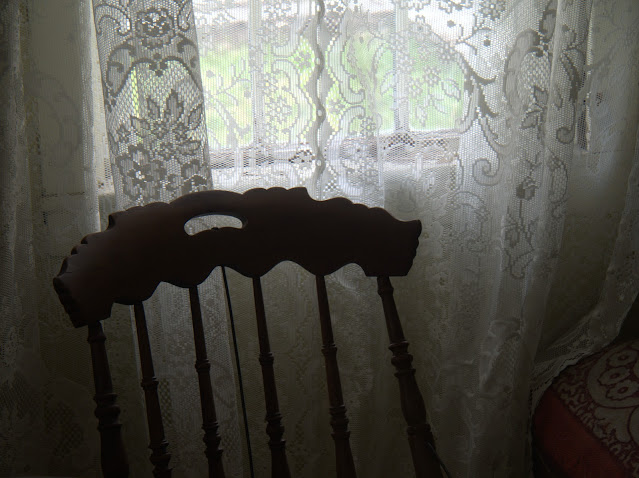What now seems today long, long ago, a woman came up to me after I'd read a story at a teachers' convention. I didn't know her. She wanted to tell me something, she said, wanted me to know that what she did with pen-and-ink was a first cousin to what I was doing with words. If I'd give her my address, she'd send me some prints. "I think you'll agree," she said.
Her name was Natalie Boonstra. She taught art one of the schools at the convention. A few years later, I would meet her husband, Juan Boonstra, the long-time Spanish-speaking minister of a broadcast ministry named the Back to God Hour.
That image up top is an old collection of stories, and that image on the cover is a Natalie Boonstra drawing. She was right. What I was doing with stories and what she was doing on paper was governed by an aesthetic at that moment in vogue--a kind of hyper-realism that became known as "minimalism."
I didn't know all of that at the time. I didn't dedicate myself to an artistic theory; what came out of the keys I tapped to create short stories simply was "minimalism." Let me try to explain this way--there's nothing particularly exceptional about that dining room chair, but if it is examined closely--as the drawing begs you to do--it invites you into a world of meaning--minimally, you could say.
You have to look hard to find Michigan's Fayette State Historical Park. It's in a bay on the south shore of the Upper Peninsula, the fingernail on what amounts to an isthmus of land. It's not on the way to anything, really. It's a ghost town, although there were a hundred or so tourists there when we arrived (don't get your hopes up).
Last week we hunted the place up, a state historical park that celebrates what remains of a "once-bustling industrial community that manufactured charcoal pig iron between 1867 and 1891," or so the guides say. What's there--a few buildings and old stone foundations remains--is all 150 years old. It's that kind of place--sort of "must-see" for museum crazies. The Jackson Iron Company created Fayette to smelt iron ore. Once upon a time it was an old-fashioned "company town," with all the sins and blessings of any 19th century village dependent on a single business owner.
Yesterday I used an image from inside one of the buildings, a picture of a corner of a building where a window shed minimal light through an old-fashioned dainty shade behind a dining room chair in silhouette. Here 'tis again.
I like it. The image conjures a story, just as Natalie Boonstra said. You can't look at it without engagement--or at least I can't. It begs your imagination to fill in the space with a story. Here's a couple more, same late afternoon light through different windows.
Maybe you see something different--perhaps Barbara and I watch too many episodes of Call the Midwife, but this one conjures a story that I can't help but think is profoundly sad.
But all of these pictures are vintage Natalie Boonstra's; all of them covers for yet-to-be-written collections of minimalist fiction.
Alas, in the age of fantasy, minimalism has lost even minimal appeal. Another book of minimalist short stories, no matter how imaginatively adorned, won't ring up the sales.
But if you're looking for a ringing endorsement of a visit to Fayette Historical Park in a far corner of Michigan's Upper Peninsula, you got it. Oddly enough, amidst all that's old and useless today, it's still a wonderful place to dream.






1 comment:
I read “Still Life” years ago, when it came out, and I got my mom to read it as well. We talked about some of the stories afterwards. I liked this collection more than “Paternity,” though I enjoyed that collection, too. DS
Post a Comment